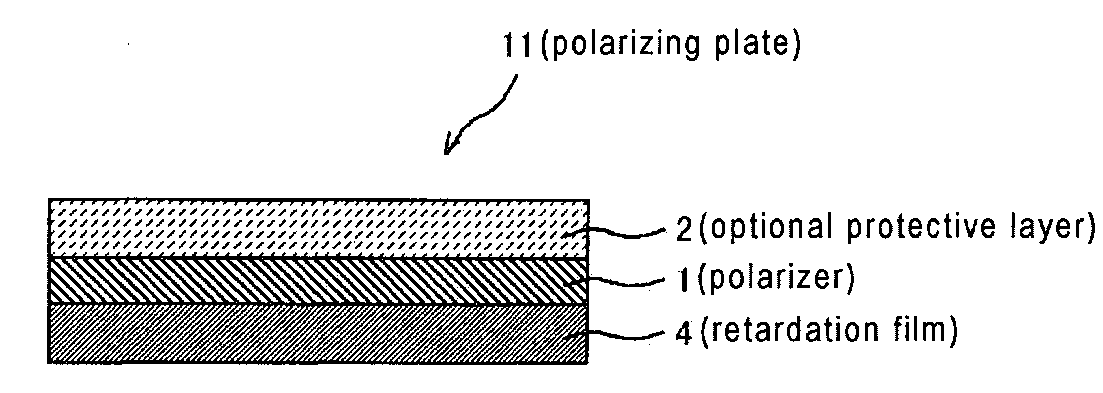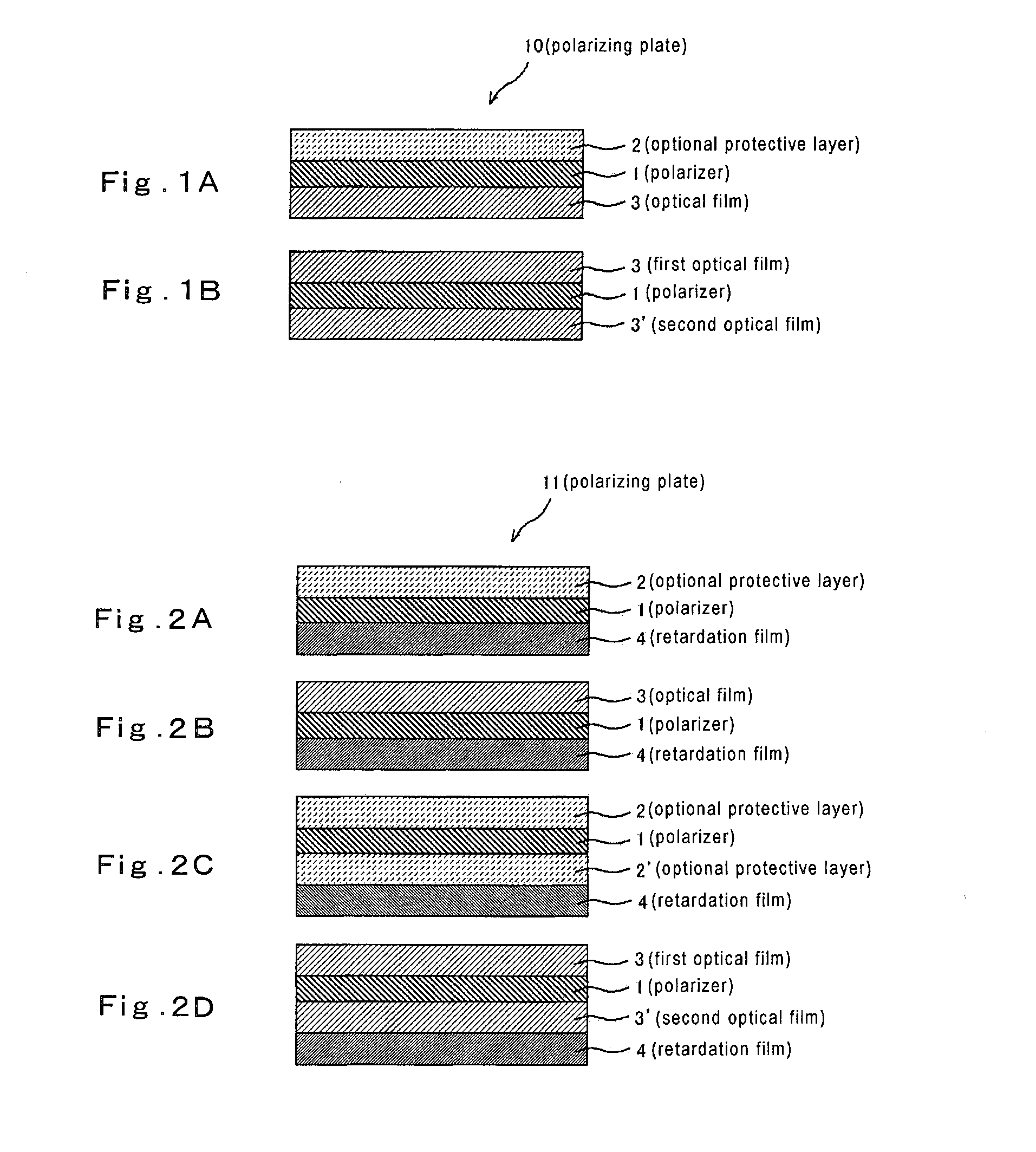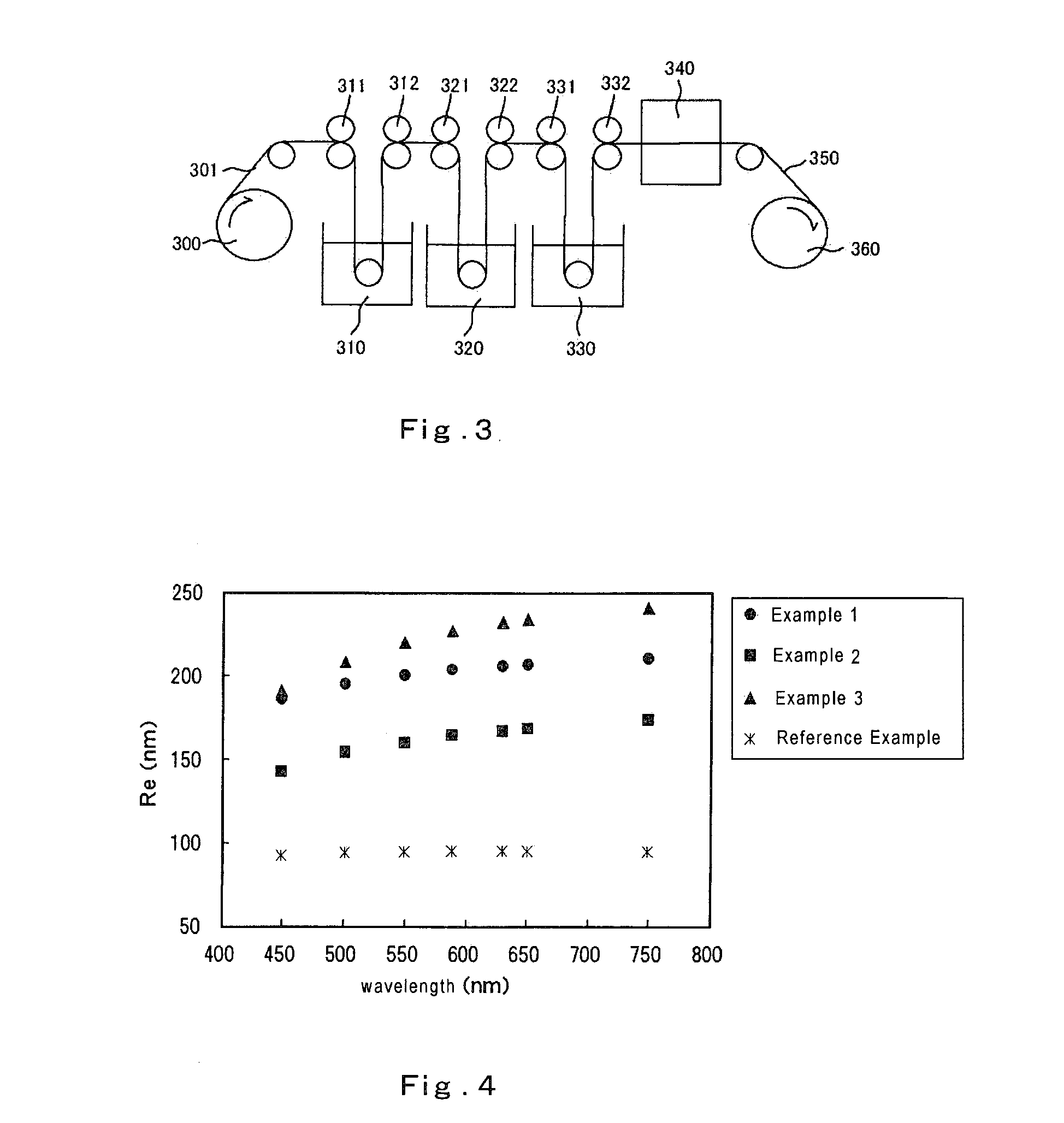Optical film containing polymer having naphtyl group
a technology of optical film and naphtyl group, which is applied in the field of optical film, can solve the problems of poor processability such as drawing, dark screen, unclear, etc., and achieve the effects of improving the display properties of liquid crystal display devices, excellent heat resistance, transparency and processability
- Summary
- Abstract
- Description
- Claims
- Application Information
AI Technical Summary
Benefits of technology
Problems solved by technology
Method used
Image
Examples
example 1
[0127]8.8 g of polyvinyl alcohol resin [trade name “NH-18”, manufactured by Nippon Synthetic Chemical Industry Co., Ltd. (polymerization degree=1800, saponification degree=99.0%)] was dried at a temperature of 105° C. for 2 hours and thereafter dissolved in 167.2 g of dimethyl sulfoxide (DMSO). 2.98 g of 2-methoxy-1-naphthaldehyde and 0.80 g of para-toluenesulfonic acid monohydrate were added thereto and stirred at a temperature of 40° C. for 1 hour. 23.64 g of 1,1-diethoxyethane (acetal) was further added to the reaction solution and stirred at a temperature of 40° C. for 4 hours. Thereafter, 2.13 g of triethylamine was added thereto to finish the reaction. The obtained crude product was subject to reprecipitation by 1 L-methanol. The filtered polymer was dissolved in tetrahydrofuran and subject to reprecipitation by methanol again. This was filtered and dried to obtain 12.7 g of a white polymer. When measured by 1H-NMR, this polymer had a repeating unit represented by the followin...
example 2
[0130]12.42 g of a white polymer was obtained in the same manner as Example 1 except for modifying the used amount of 2-methoxy-1-naphthaldehyde into 3.72 g. When measured by 1H-NMR, this polymer had a repeating unit represented by the following formula (X) and the ratio (molar ratio) of l:m:n was 13:50:37. The glass transition temperature of this polymer measured by a differential scanning calorimeter was 131° C.
[0131]The above-mentioned polymer was dissolved in methyl ethyl ketone (MEK), applied on a polyethylene terephthalate film [trade name “LUMIRROR S-27E”, manufactured by Toray Industries, Inc.] with a thickness of 70 μm by an applicator, dried in an air-circulating drying oven and thereafter peeled off the polyethylene terephthalate film to produce an optical film with a thickness of 96 μm. This optical film was drawn by a drawing machine in the air-circulating drying oven at a temperature of 150° C. by 1.5 times to produce a retardation film A-2. The properties of the obtai...
example 3
[0132]8.8 g of polyvinyl alcohol resin [trade name “NH-18”, manufactured by Nippon Synthetic Chemical Industry Co., Ltd. (polymerization degree=1800, saponification degree=99.0%)] was dried at a temperature of 105° C. for 2 hours and thereafter dissolved in 167.2 g of dimethyl sulfoxide (DMSO). 2.98 g of 2-methoxy-1-naphthaldehyde and 0.80 g of para-toluenesulfonic acid monohydrate were added thereto and stirred at a temperature of 40° C. for 1 hour. 3.18 g of benzaldehyde was added to the reaction solution and stirred at a temperature of 40° C. for 1 hour, and thereafter 23.60 g 1,1-diethoxyethane (acetal) was further added thereto and stirred at a temperature of 40° C. for 3 hours. Thereafter, 2.13 g of triethylamine was added thereto to finish the reaction. The obtained crude product was subject to reprecipitation by 1 L-methanol. The filtered polymer was dissolved in tetrahydrofuran and subject to reprecipitation by methanol again. This was filtered and dried to obtain 11.5 g of...
PUM
| Property | Measurement | Unit |
|---|---|---|
| carbon number | aaaaa | aaaaa |
| carbon number | aaaaa | aaaaa |
| glass transition temperature | aaaaa | aaaaa |
Abstract
Description
Claims
Application Information
 Login to View More
Login to View More - R&D
- Intellectual Property
- Life Sciences
- Materials
- Tech Scout
- Unparalleled Data Quality
- Higher Quality Content
- 60% Fewer Hallucinations
Browse by: Latest US Patents, China's latest patents, Technical Efficacy Thesaurus, Application Domain, Technology Topic, Popular Technical Reports.
© 2025 PatSnap. All rights reserved.Legal|Privacy policy|Modern Slavery Act Transparency Statement|Sitemap|About US| Contact US: help@patsnap.com



